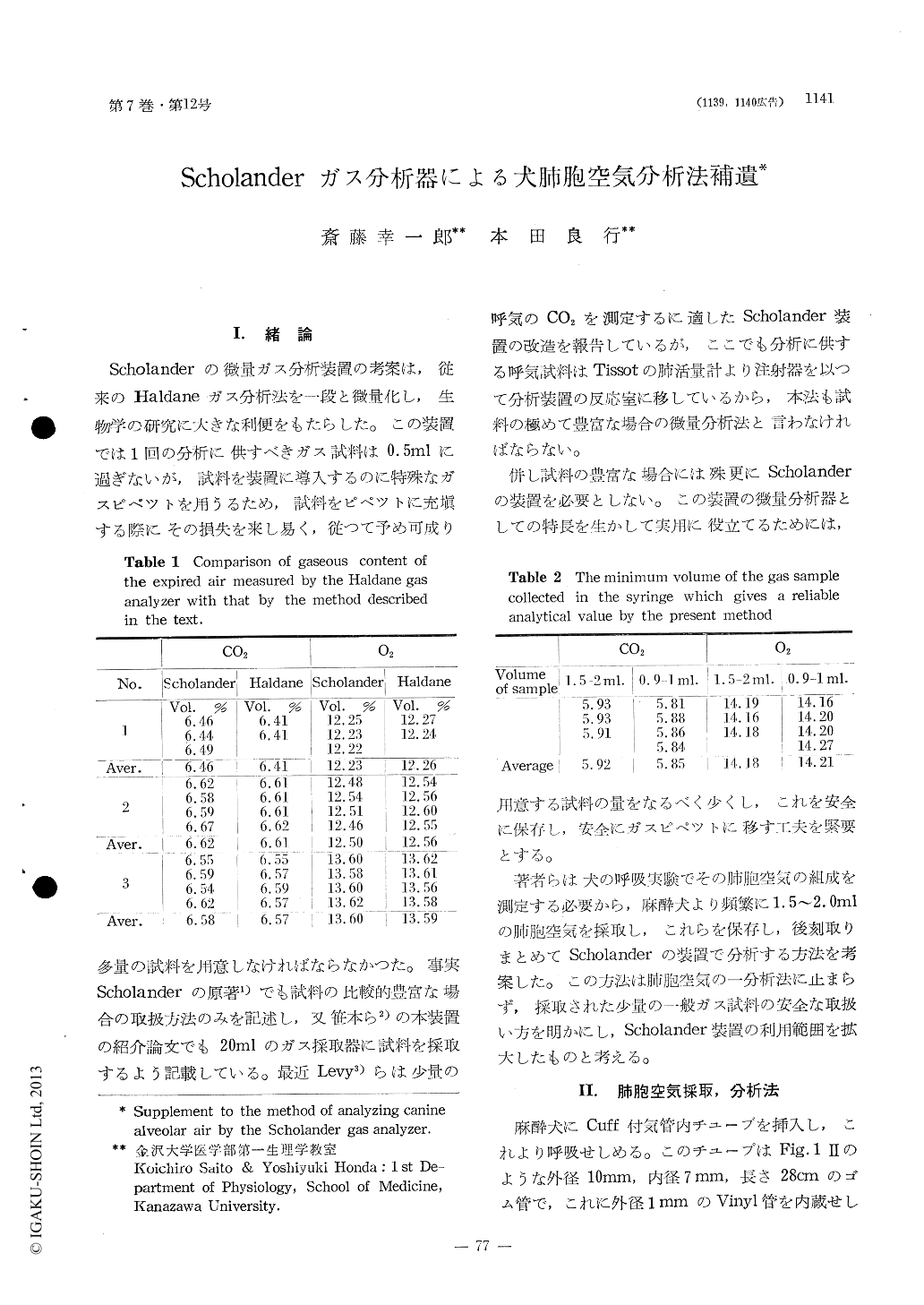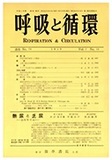Japanese
English
- 有料閲覧
- Abstract 文献概要
- 1ページ目 Look Inside
麻酔犬の肺胞空気1.5〜2ml.を頻繁に注射器に採取し,これらを保存し,後に取りまとめてScholanderのガス分析器で分析する方法を老案した。僅少の誤差が許される場合には,採取する試料の量を1.0mlにまで少くすることができる。
Supplementary apparatus were devised, which made it possible to analyze a small volume of alveolar air samples collected frequently from a dog. They are sketched in Fig.1 Sampling of the alveolar air was performed through a thin vinyl tube incorporated in an intratracheal tube (Fig.1). As a sampling vessel a 2ml. tuberculin syringe, whose inner dead space having been filled with mercury, was connected with the end ( A) of the thin tube. After the air in the thin tube was replaced with alveolar air in the preceding post-expiratory phase, 1.5 to 2ml. of alveolar air was collected end-tidally in the syringe, which was immediately sealed with a rubber cap put on its tip as shown in Fig.III. The transfer of the sample from the syringe to the gas pipette was carried out by means of the aparatus shown in Fig.IV, which was constructed of a leveling bulb (L), two kinds of vinyl tubes (V and v) and mercury. At first mercury. was raised to the funnel-shaped end (T) of the tube V in full. Then the syringe containing the sample was connected with the tip (t) of the tube v, and the air in the tube v and the mercury in the syringe were expelled completely through the end of the tube in the funnel (T). The rubber tip attached to the gas pipette was then pressed tightly into the funnel, Fig.IV illustrating this state of the procedure. By pushing the plunger of the syringe, the gas sample was transferred into the tube V just below the pipette. As the sample was accumulated here to some extent, it began to flow spontaneously into the pipette forcing up a droplet of mercury.
In order to ascertain the utility of this method, some experiments were carried out and the following satisfactory results were obtained:
1) The expired air collected in a Douglas bag was analyzed on one hand by this method with the Scholander apparatus and on the other hand by the ordinary Haldane apparatus, and the results obtained were compared with each other (Table 1). A satisfactory agreement was observed between them. Reducing the volume of the sample in the syringe to 1.0ml., we performed similar experiments (Table 2). As shown in the table, the amount of the sample to be collected was found to be able to be reduced to 1.0ml, if a minute error was permissible.
2) The expired air collected in a bag was transferred to several syringes and preserved for several days. No change was observed in the composition of the preserved samples (Table 3). Hence it proved possible that the samples of the alveolar air collected during the experiment could be stored and analyzed in mass afterwards.
3) As an example, the analytical results of ten samples of the alveolar air which were collected from an anestetized dog at intervals of 0.5 to 1 minute are shown in Table 4, where a fairly good agreement can be seen among them.

Copyright © 1959, Igaku-Shoin Ltd. All rights reserved.


